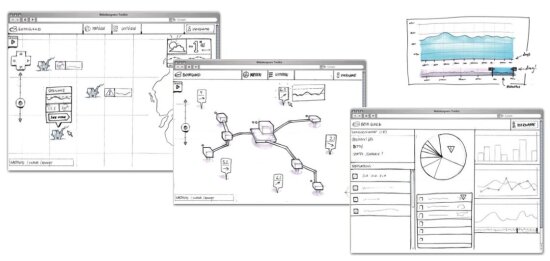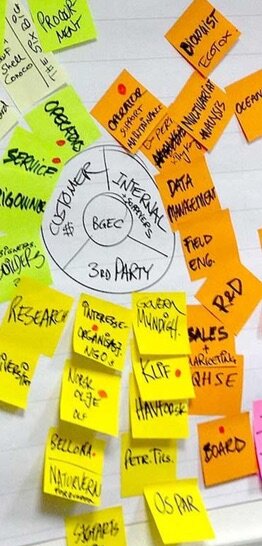The monitoring technology used by Biota Guard is based on a combination of biological, chemical and physical sensors. For example, they have blue mussels equipped with instruments that filter over 100 litres of water every 24 hours and respond to the slightest environmental changes. This makes them the perfect animal to monitor marine pollution. All environmental data from the mussels is compared in a powerful real-time analysis engine.
Challenge
Biota Guard collects large amounts of complex data on environmental changes in the ocean. At the same time, they have a wide range of users with equally as diverse needs, such as oil companies and government environmental regulatory agencies. Biota Guard’s greatest challenge was therefore to make the information relevant and easy to understand for multiple users at the same time.

Process
A DIP project implies user participation and the involvement of designers from the very start. Biota Guard began by identifying the most important stakeholders to be interviewed by the designers. They created extensive interview guides in order to gain insight into needs and methods.
These insights revealed the following needs:
1. Visual presentations, such as maps.
2. Flexible solutions with a choice of several package services.
3. Detailed information.
4. Real-time data is advantageous in the event of an accident.

Photo: Ukjent
Biota Guard has obtained indispensable information that will be decisive for the further development of services.
Result
The DIP project enabled Biota Guard to develop a prototype of a user-driven service. The prototype has three different information levels, the first of which covers a larger geographic area, the second specific oil platforms and the third provides environmental data from every sensor unit.
Feedback on the prototype and the most important insights will form the basis for the development of the final solution. All in all, the DIP project has enabled Biota Guard to explore possibilities it would otherwise not have had the resources to pursue. Biota Guard has obtained indispensable information that will be decisive for the further development of services. Biota Guard now has clear principles and a clear-cut structure for creating a user-friendly and attractive solution.

